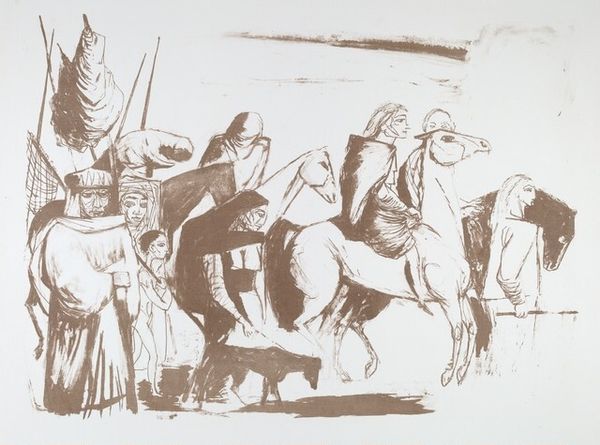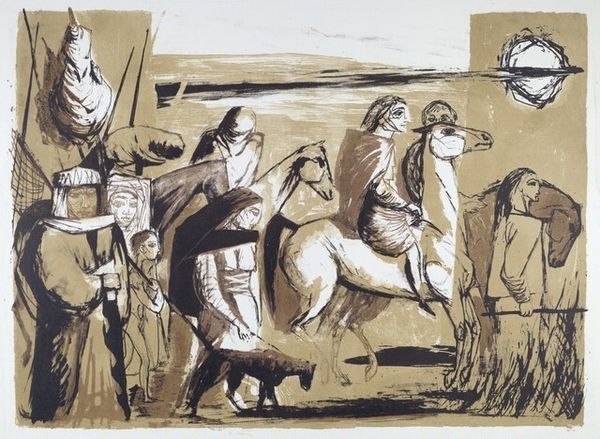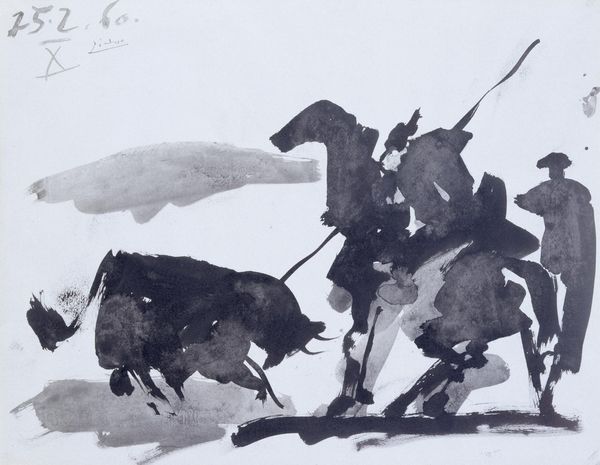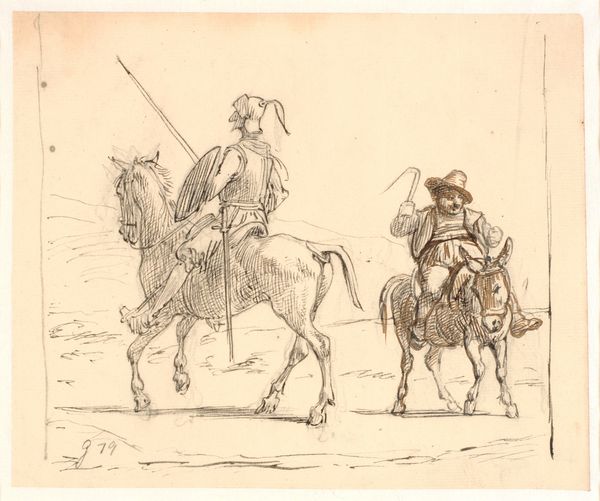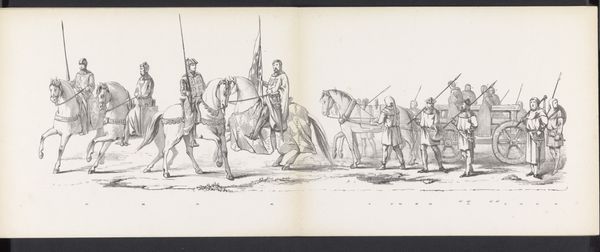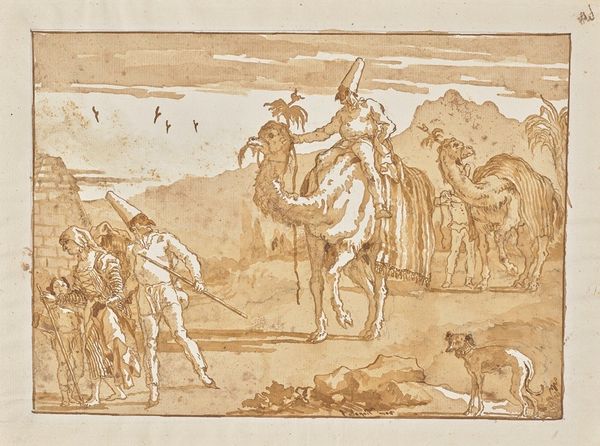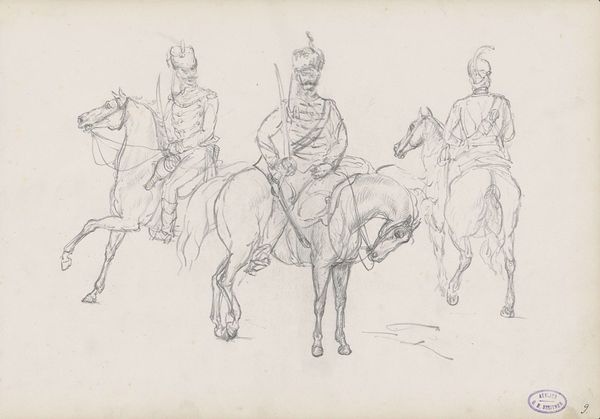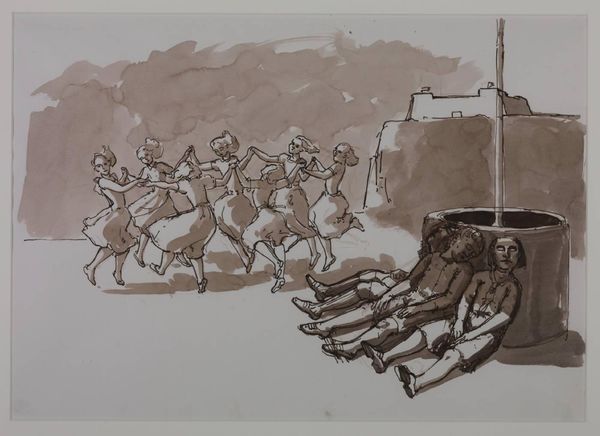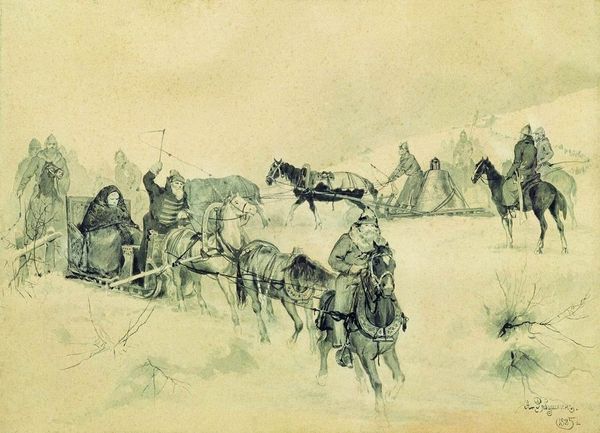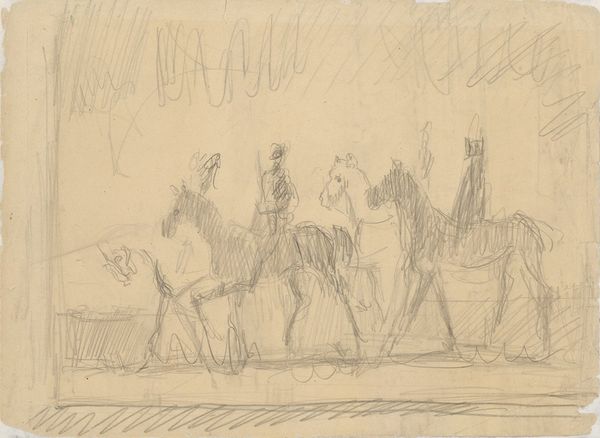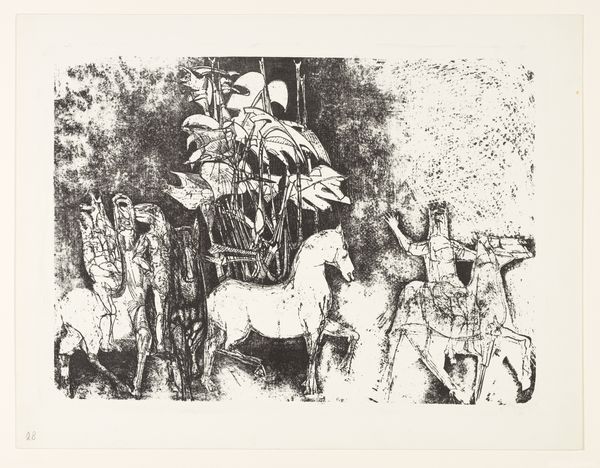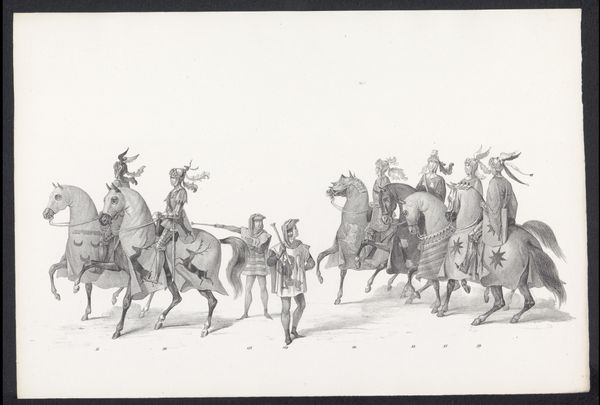
drawing, print, etching, paper
#
drawing
#
narrative-art
# print
#
etching
#
landscape
#
figuration
#
paper
#
abstraction
#
line
#
history-painting
#
monochrome
Copyright: National Gallery of Art: CC0 1.0
Editor: Benton Spruance's "Anabasis," created in 1957, is an etching printed on paper, showcasing a monochrome procession. It feels…fragmented. The composition is dynamic but unsettling. How do you interpret this work through a formal lens? Curator: Note how Spruance employs stark contrasts. The interplay between the dense, almost chaotic lines in the foreground and the relative openness of the sky—punctuated by that fractured sun—creates a visual tension. Do you perceive how this contrast directs the viewer’s eye and dictates a reading of depth, or perhaps its deliberate absence? Editor: I do, and the lines! They seem hurried, almost frantic, yet they coalesce into recognizable figures. Curator: Precisely. It is the line work, considered not merely as representational but as an element possessing intrinsic value, that conveys the emotional weight of the piece. Consider the texture achieved through the varying density and direction of these lines. Does this articulation reveal clues about the artist’s process, or perhaps, even intent? Editor: Perhaps to convey urgency? The figures appear to be journeying somewhere of importance, but their surroundings appear abstract and dangerous. Curator: Indeed. The subject matter of “Anabasis” may allude to historical events. Yet it’s the formal elements – line, texture, contrast, composition – that evoke a sense of unease, directing our understanding independently of any external narrative context. By examining these elements closely, the print evokes the anxieties of its historical context, of the era's artmaking strategies and the print’s subject. Editor: Thank you. Looking at the artwork in this manner revealed so many layers. Curator: It's through a rigorous observation of form that we unearth the artwork's complexities. A study of its parts yields a perspective on the artwork in its entirety.
Comments
No comments
Be the first to comment and join the conversation on the ultimate creative platform.
